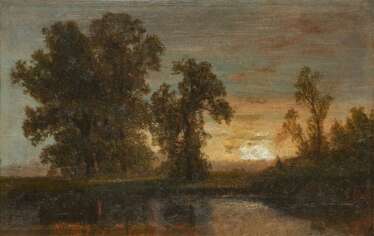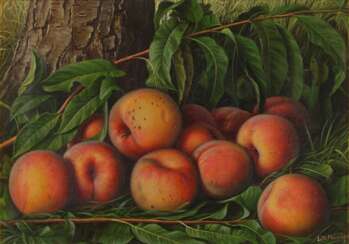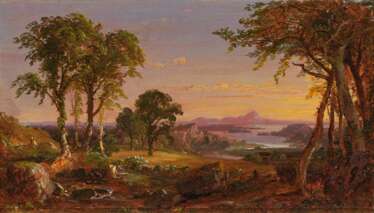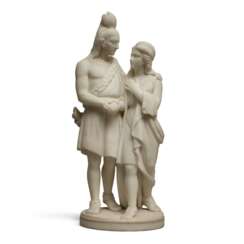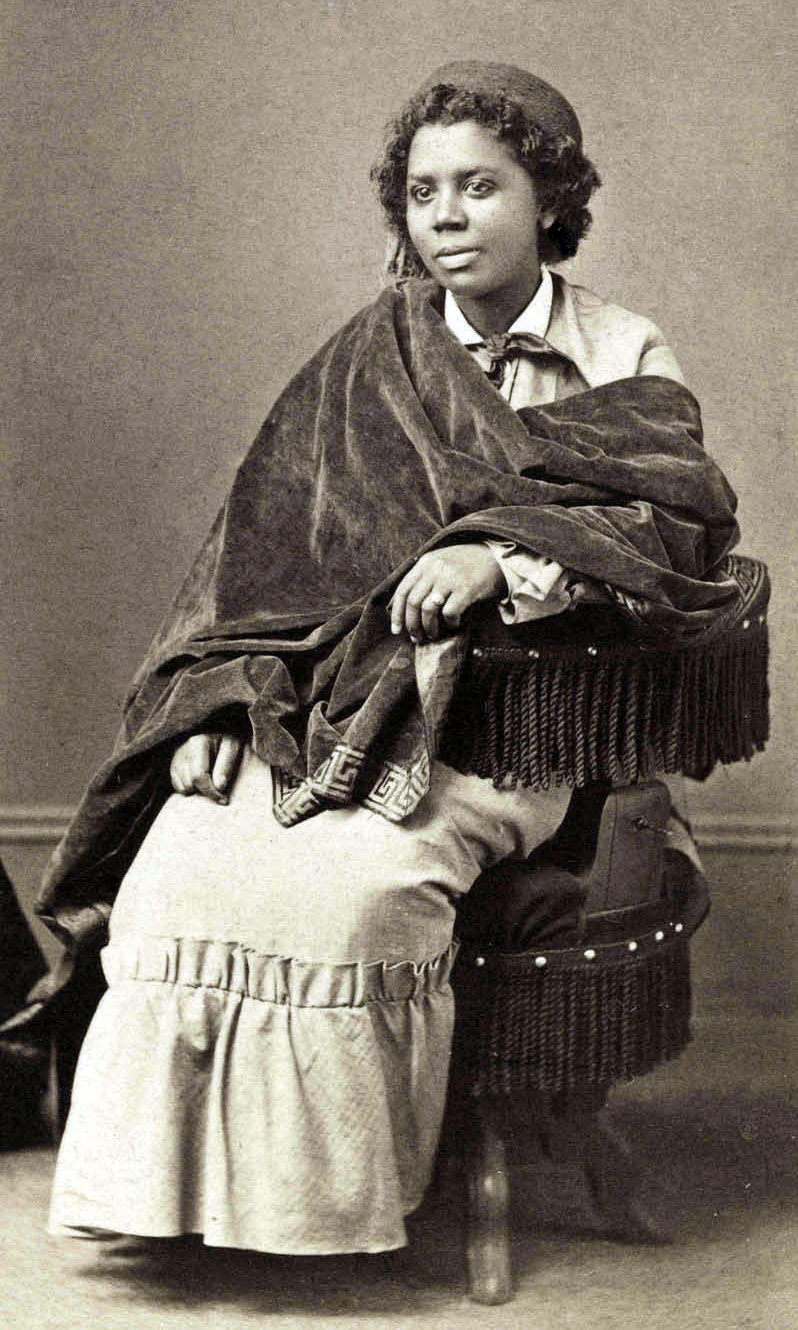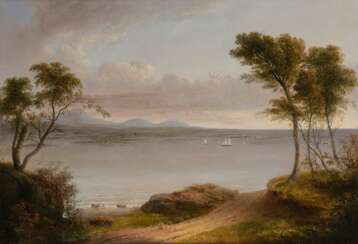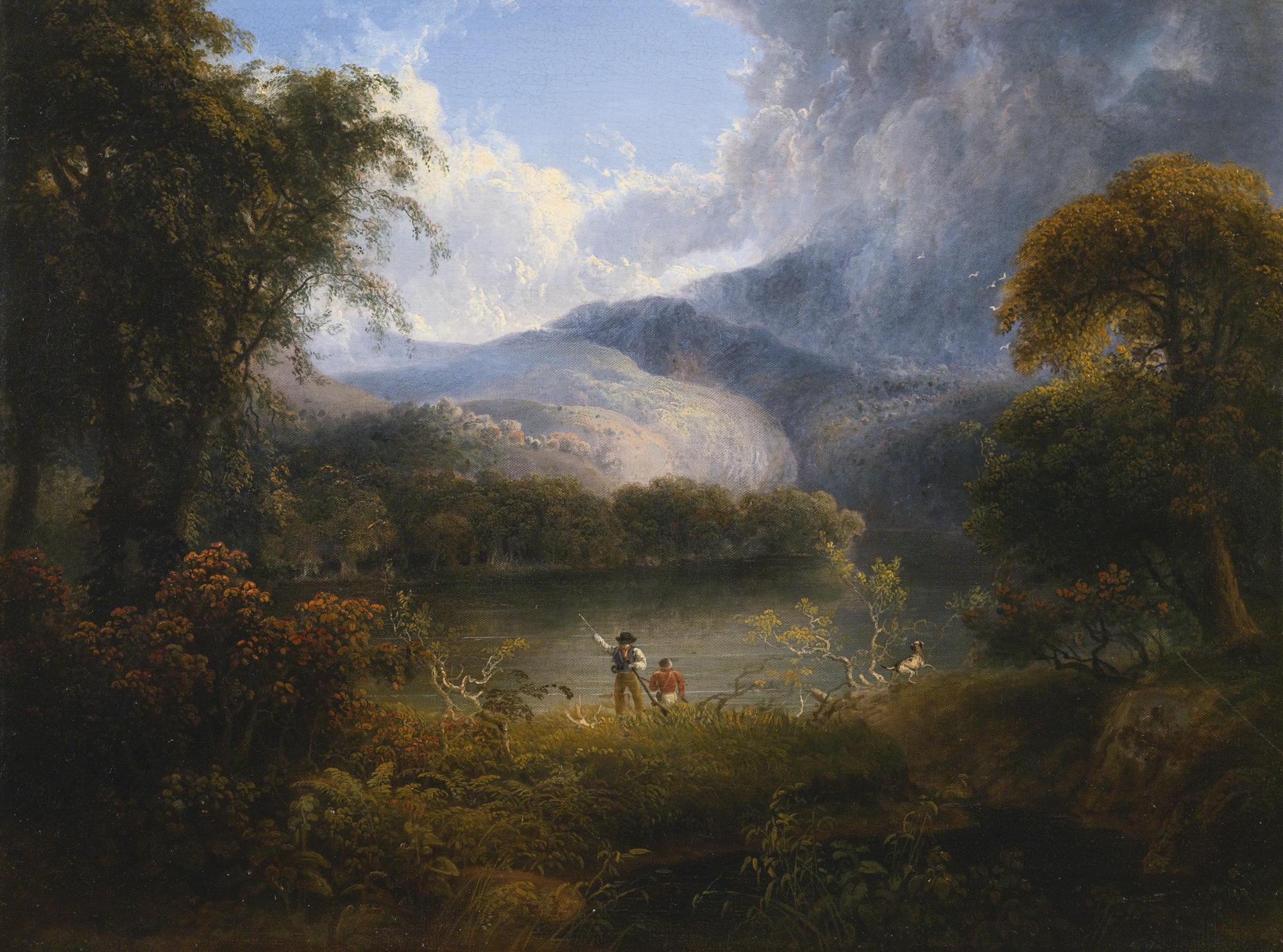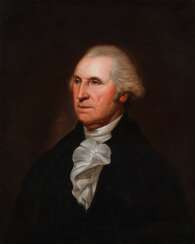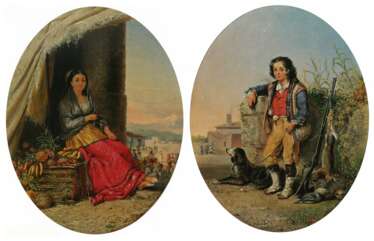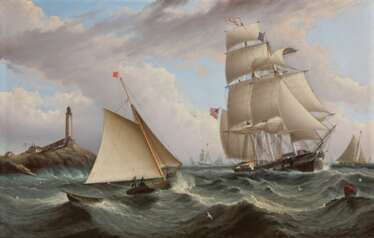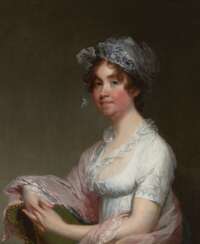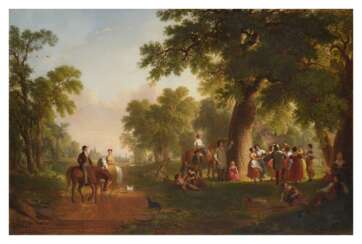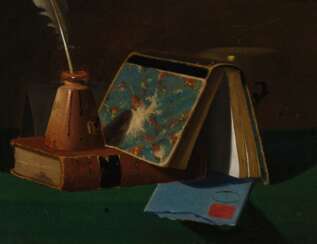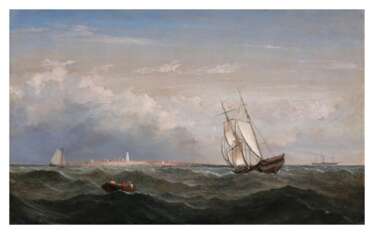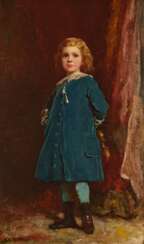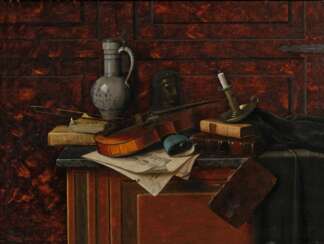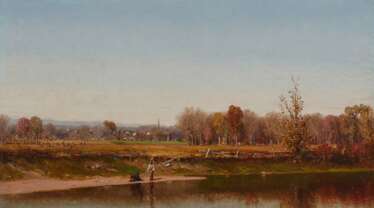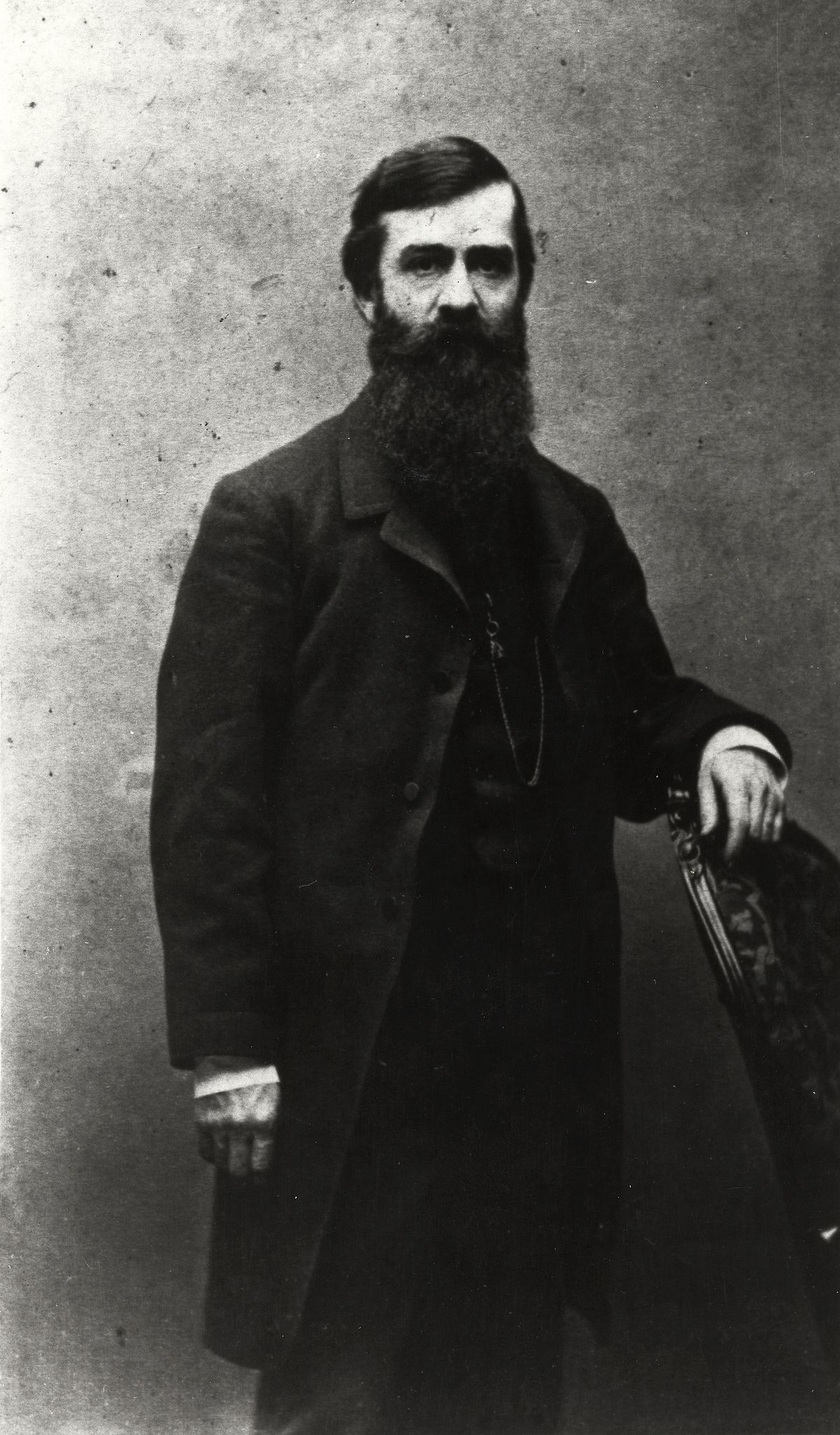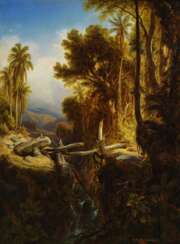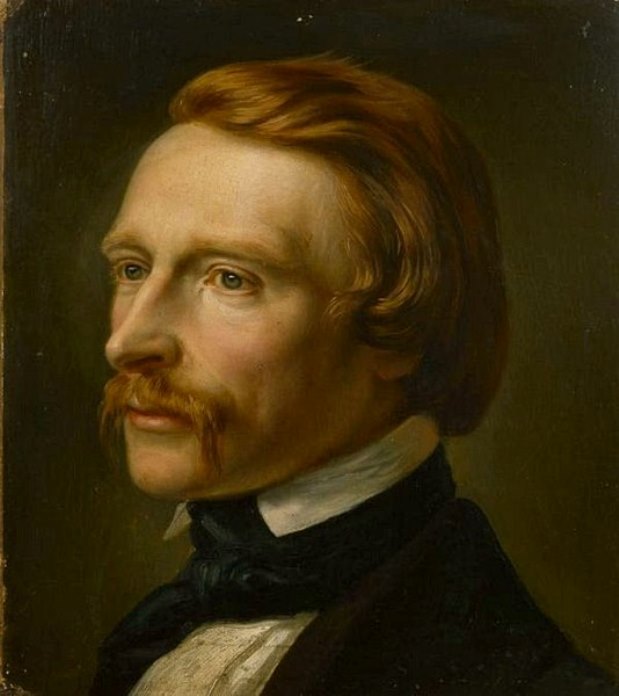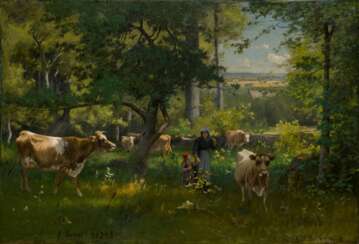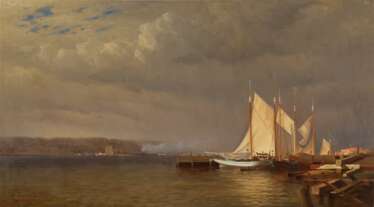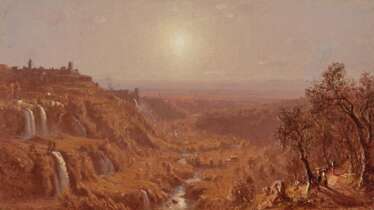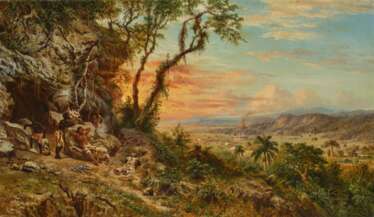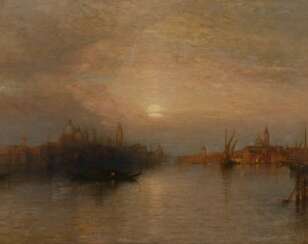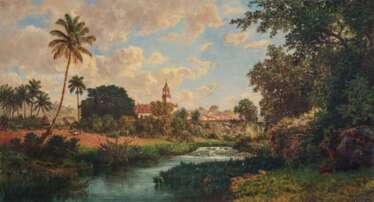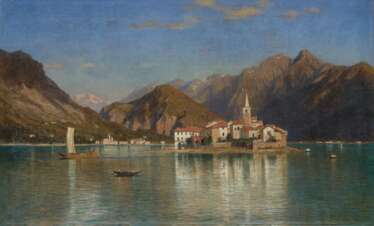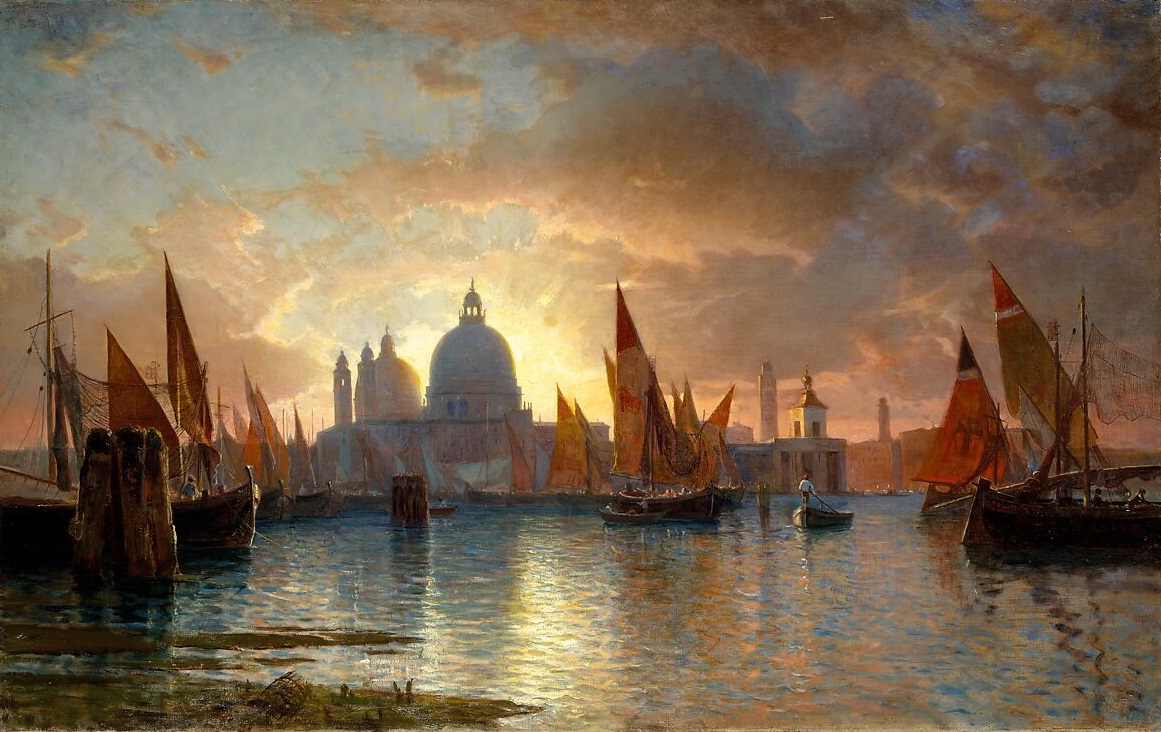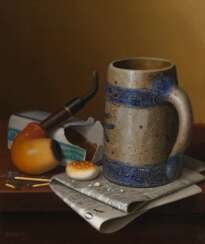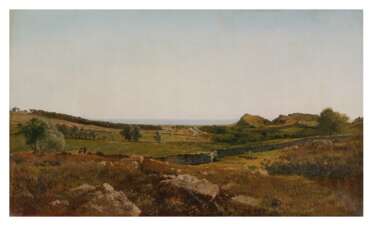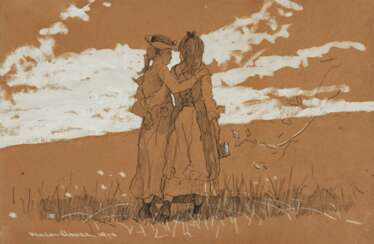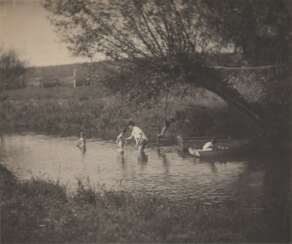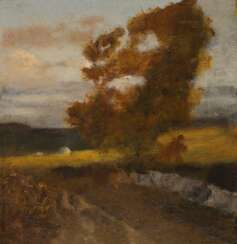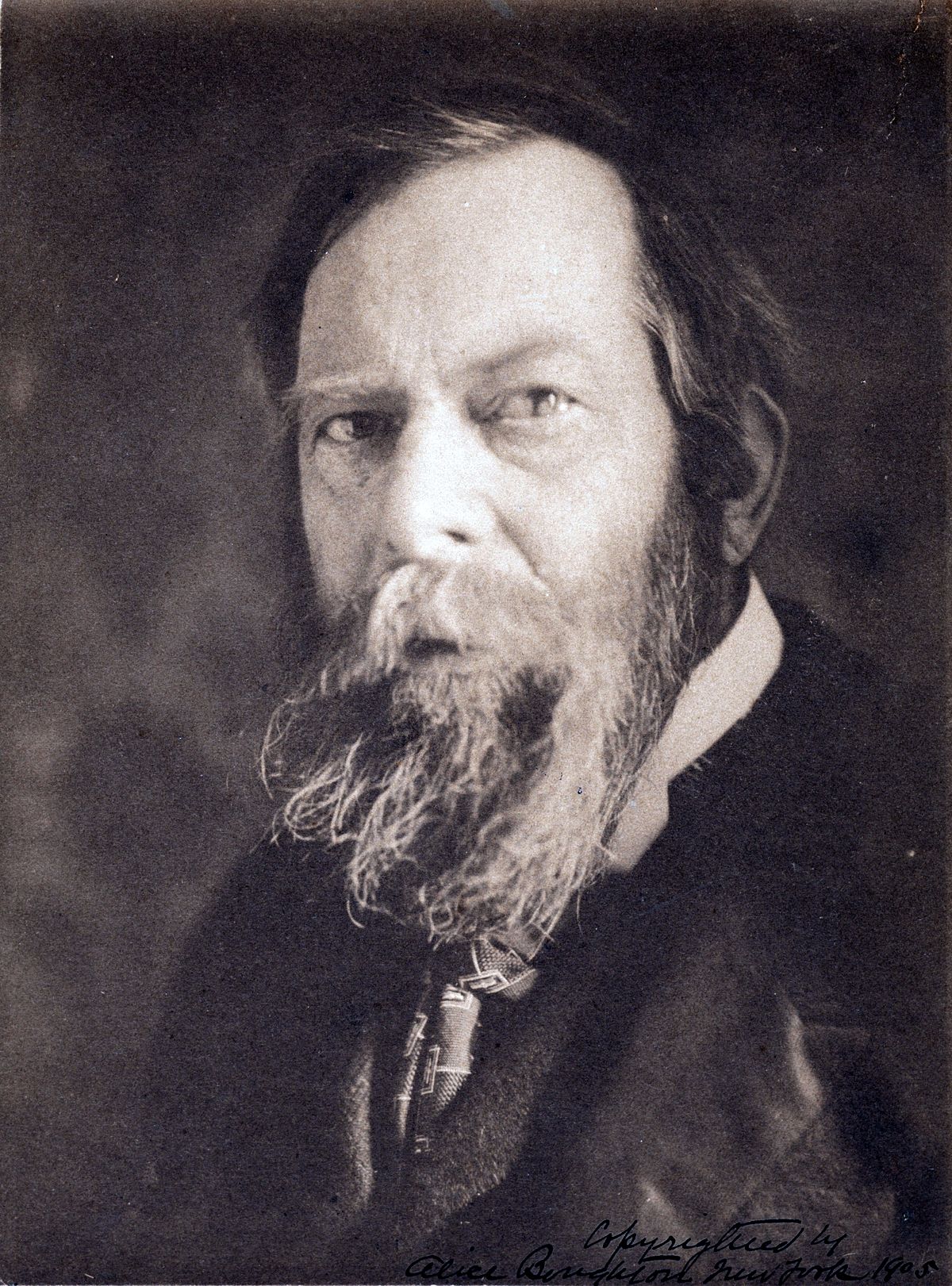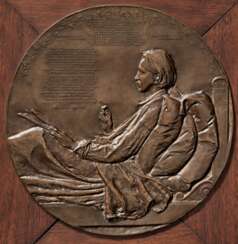
Art of America
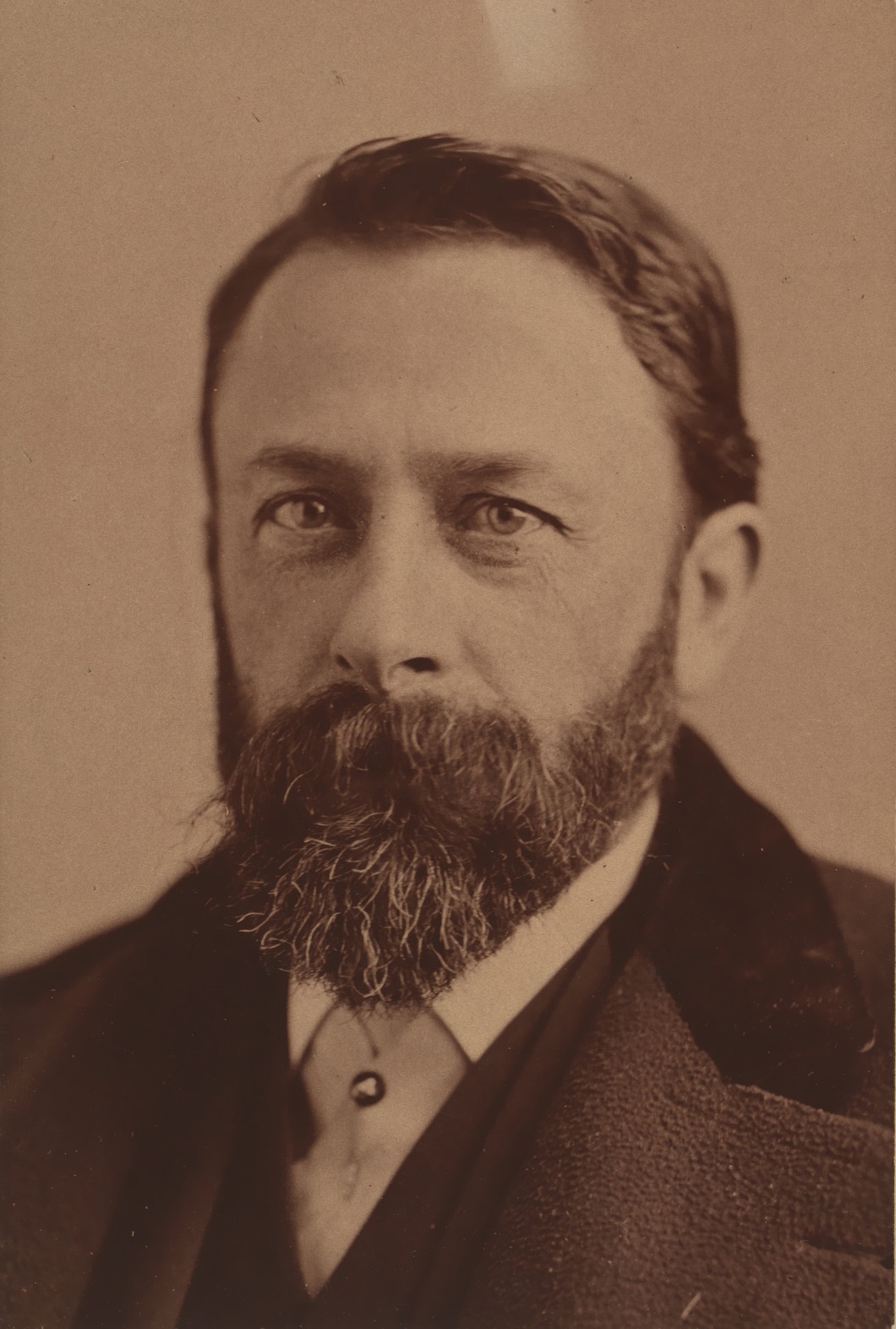
Albert Bierstadt, a German-American painter, became renowned for his expansive and romanticized landscapes of the American West. Born in Solingen, Germany, in 1830, Bierstadt moved to New Bedford, Massachusetts, at the age of two with his family. Largely self-taught, he initially worked as a drawing teacher before traveling to Europe to hone his skills. Bierstadt's European studies, particularly in Düsseldorf, greatly influenced his artistic style, equipping him with the techniques that he would later apply to his majestic depictions of the American wilderness.
Bierstadt's first major expedition to the West in 1859 marked the beginning of his lifelong fascination with the region. His works from this period, such as "The Rocky Mountains, Lander's Peak" (1863), captured the public imagination and established him as a leading figure in the Hudson River School. These paintings were celebrated for their detailed and idealized portrayal of the rugged landscapes and played a role in shaping the perception of the American West during a time of rapid territorial expansion and exploration.
Despite his success, Bierstadt's style fell out of favor towards the end of his career as tastes shifted towards realism and Impressionism. His later works, including "The Last of the Buffalo" (1888), were criticized for their perceived theatricality and excessive romanticism. Bierstadt's popularity waned, and he faced financial difficulties, but his legacy experienced a resurgence in the mid-20th century as interest in his technique and contributions to American art history grew.
For collectors and enthusiasts of American landscape painting, Bierstadt’s works offer a vivid, albeit embellished, glimpse into the 19th-century frontier spirit. His paintings are housed in major institutions like the Metropolitan Museum of Art and the National Gallery of Art, serving as testaments to his skill and vision.
To stay updated on exhibitions and sales related to Albert Bierstadt's works, consider signing up for alerts tailored to his artistic contributions. This subscription will keep you informed about new discoveries and auction events specifically linked to Bierstadt's enduring legacy.
Levi Wells Prentice was an American still life and landscape painter. Prentice was associated with the Hudson River School.
Self-taught artist Levi Wells Prentice is best known for his realistic still life compositions of fruit arranged within a landscape, or abundantly spilling from bushel baskets. Early in his career, he painted portraits and landscapes of the Adirondack Mountain region of Lewis County, New York, his birthplace.
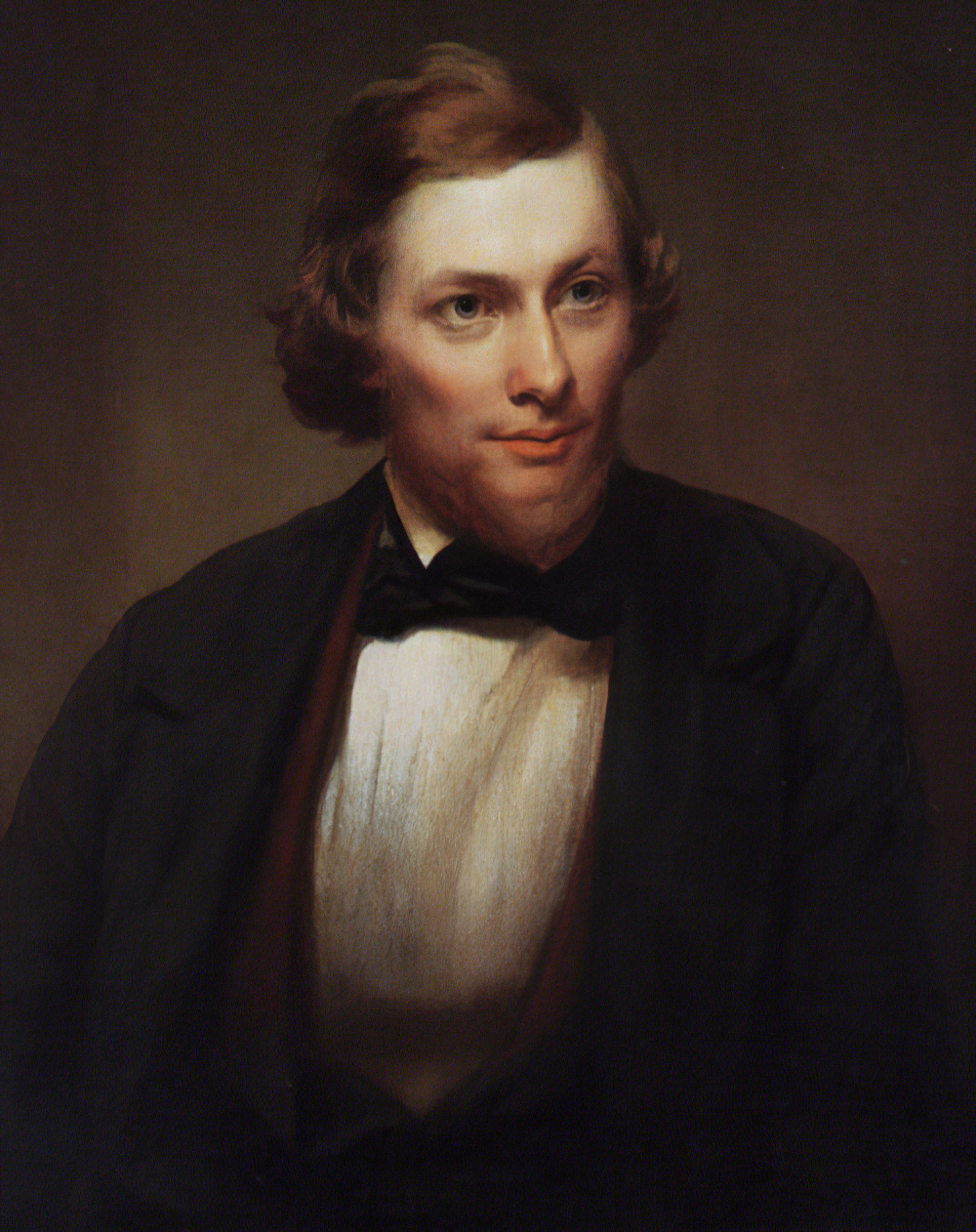
Jasper Francis Cropsey was an important American landscape artist of the Hudson River School.
Cropsey's interest in architecture continued throughout his life and was a strong influence in his painting, most evident in his precise arrangement and outline of forms. But Cropsey was best known for his lavish use of color and, as a first-generation member from the Hudson River School, painted autumn landscapes that startled viewers with their boldness and brilliance. As an artist, he believed landscapes were the highest art form and that nature was a direct manifestation of God. He also felt a patriotic affiliation with nature and saw his paintings as depicting the rugged and unspoiled qualities of America.
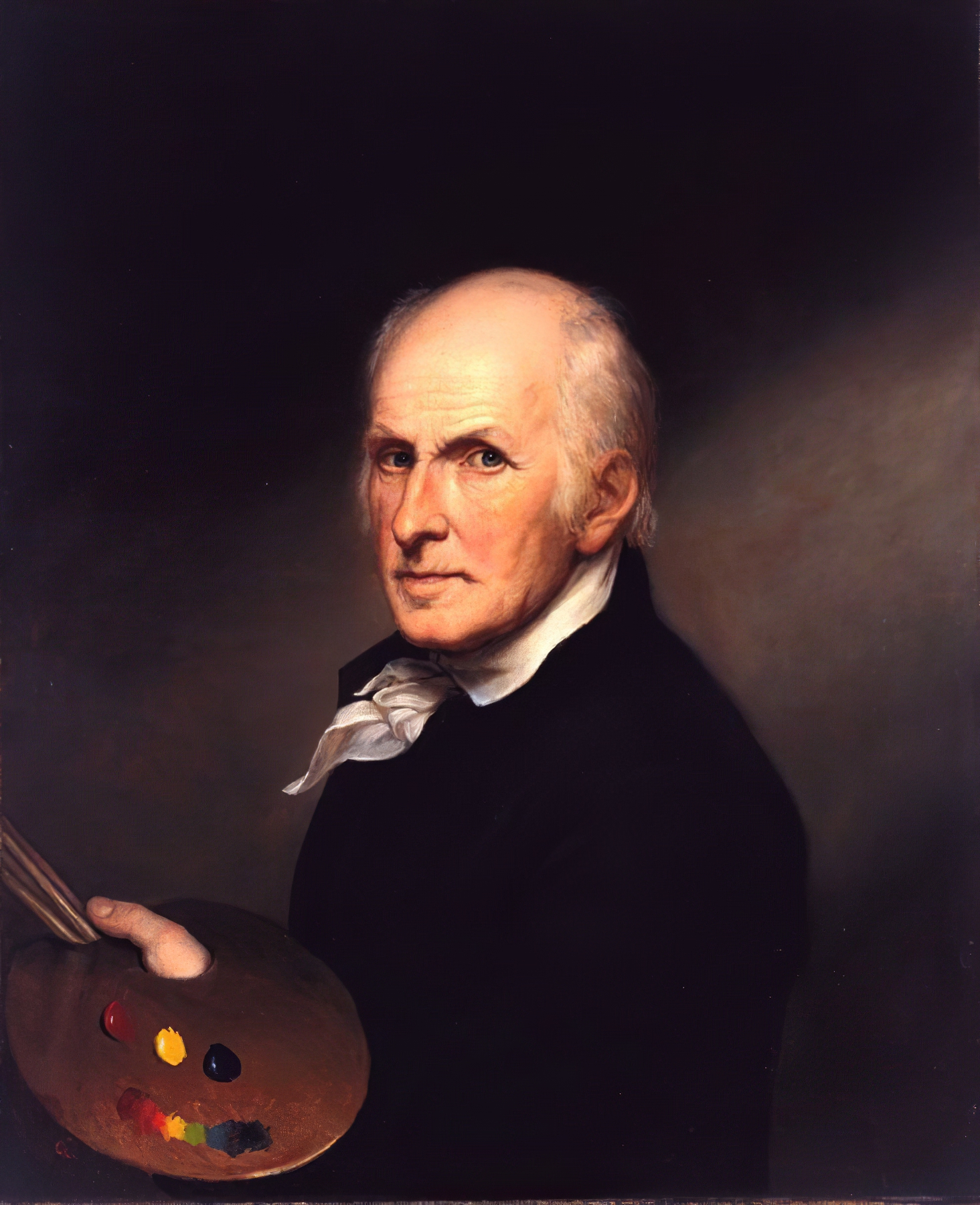
Charles Willson Peale was an American painter, soldier, scientist, inventor, politician and naturalist. He is best remembered for his portrait paintings of leading figures of the American Revolution, and for establishing one of the first museums in the United States.
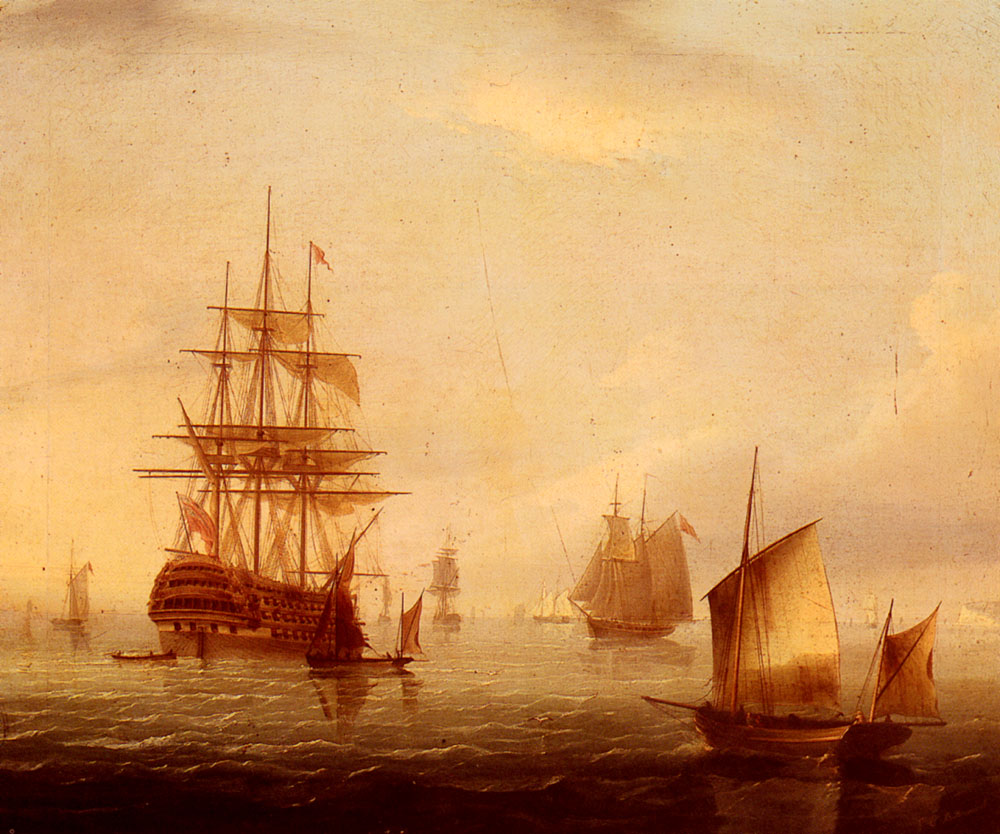
James Edward Buttersworth was an English painter who specialized in maritime art and is considered among the foremost ship portraitists in the United States of the nineteenth century. His paintings are particularly known for their meticulous detail, dramatic settings, and grace in movement.
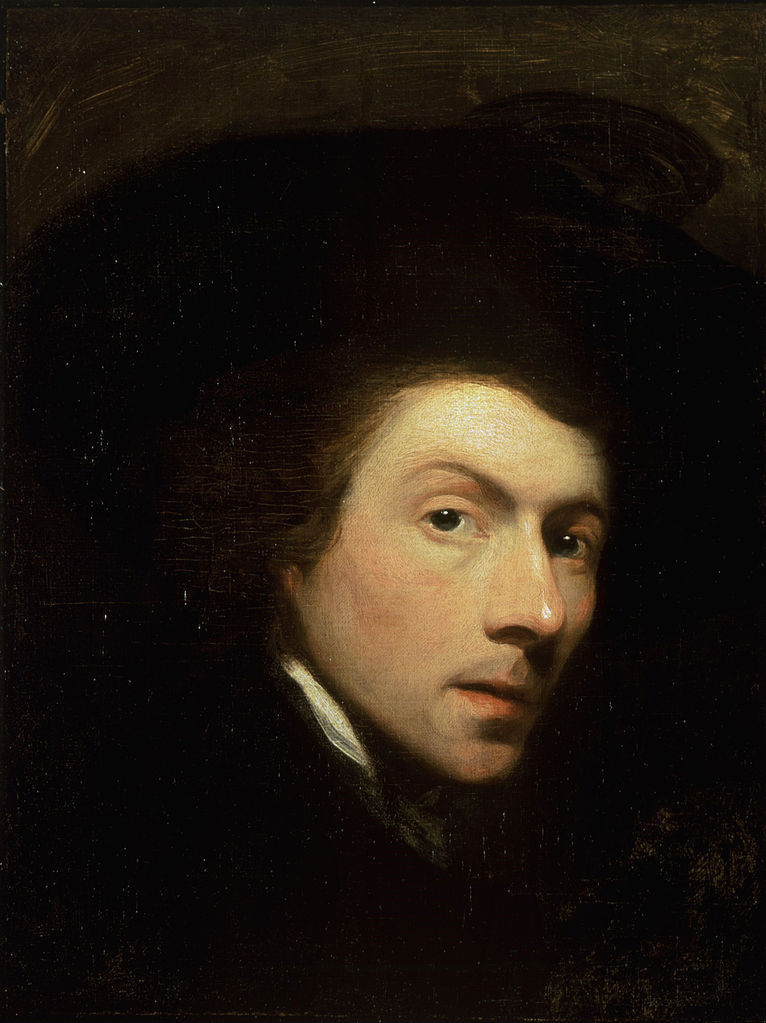
Gilbert Charles Stuart was an American painter from Rhode Island Colony who is widely considered one of America's foremost portraitists. His best-known work is an unfinished portrait of George Washington, begun in 1796, which is sometimes referred to as the Athenaeum Portrait. Stuart retained the portrait and used it to paint scores of copies that were commissioned by patrons in America and abroad. The image of George Washington featured in the painting has appeared on the United States one-dollar bill for more than a century and on various postage stamps of the 19th century and early 20th century.
Stuart produced portraits of more than 1,000 people, including the first six Presidents. His work can be found today at art museums throughout the United States and the United Kingdom, including the Metropolitan Museum of Art and Frick Collection in New York City, the National Gallery of Art in Washington, D.C., the Philadelphia Museum of Art in Philadelphia, the National Portrait Gallery in London, Worcester Art Museum in Worcester, Massachusetts, and the Boston Museum of Fine Arts.
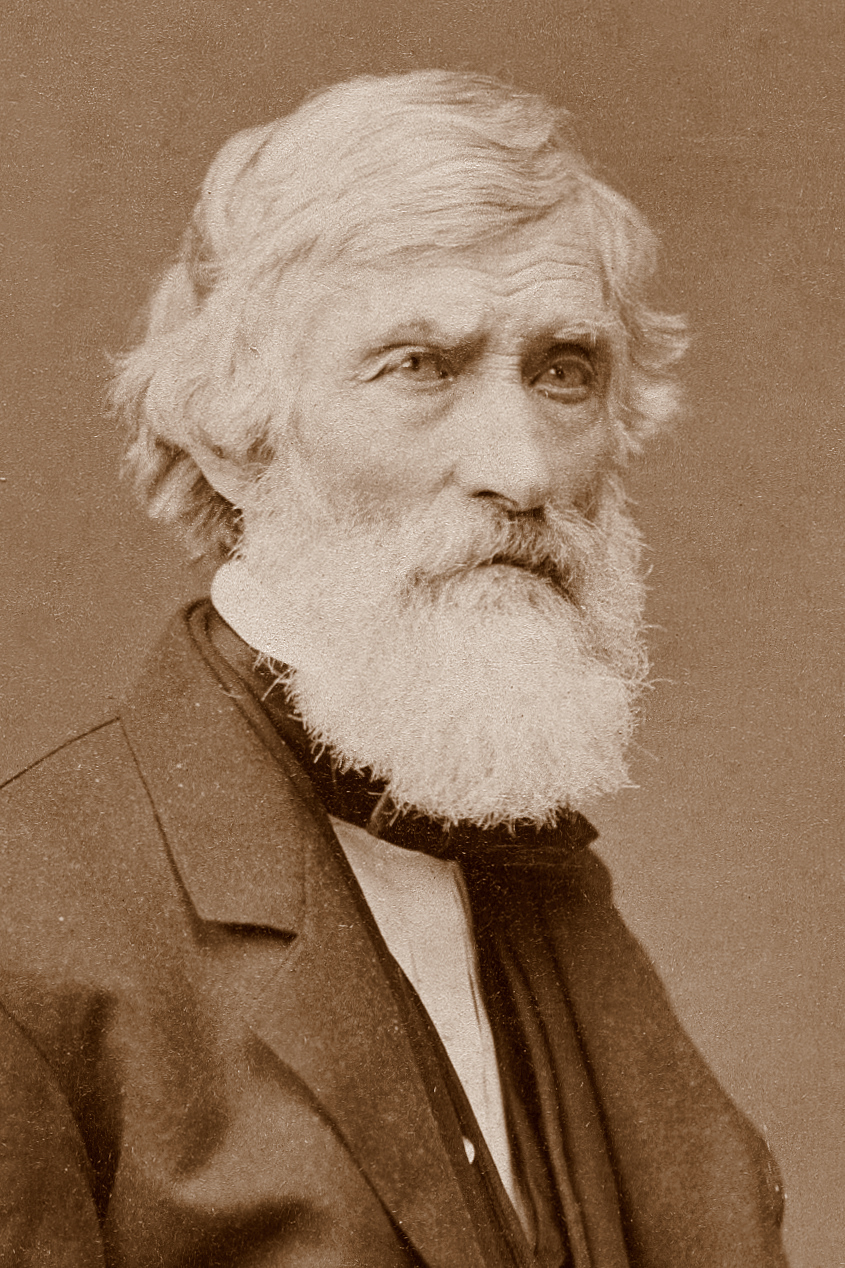
Asher Brown Durand was a pivotal figure in American art, particularly renowned for his role in the Hudson River School, a group of artists known for their romantic portrayal of the American landscape. Born in Jefferson Village, New Jersey, in 1796, Durand initially carved out a successful career as an engraver before transitioning to landscape painting, influenced by Thomas Cole and other contemporaries.
Asher Brown Durand's artistic philosophy emphasized the importance of nature as a direct inspiration for art, a viewpoint he eloquently expressed in his "Letters on Landscape Painting." His works often reflect a deep reverence for the natural world, intertwining artistic vision with the divine aspects of the American wilderness. "Kindred Spirits" (1849), one of his most celebrated works, exemplifies this approach, depicting Thomas Cole and poet William Cullen Bryant in a sublime natural setting.
Throughout his career, Asher Brown Durand's contributions to the American art scene were significant, not just through his paintings but also through his role as a mentor and his involvement in the National Academy of Design. His works continue to be celebrated for their detailed representation of nature and their influence on the course of American landscape painting.
Asher Brown Durand's legacy is preserved in various prestigious collections, including the Metropolitan Museum of Art and the Smithsonian American Art Museum, where his works continue to inspire appreciation for the intrinsic beauty of the American landscape and its artistic rendition.
For art collectors and enthusiasts looking to delve deeper into the rich tapestry of American art history, staying informed about Asher Brown Durand's works and their significance is invaluable. Consider subscribing to updates on exhibitions and sales featuring Durand's works to enhance your collection and deepen your understanding of this pivotal artist's contributions to the art world.
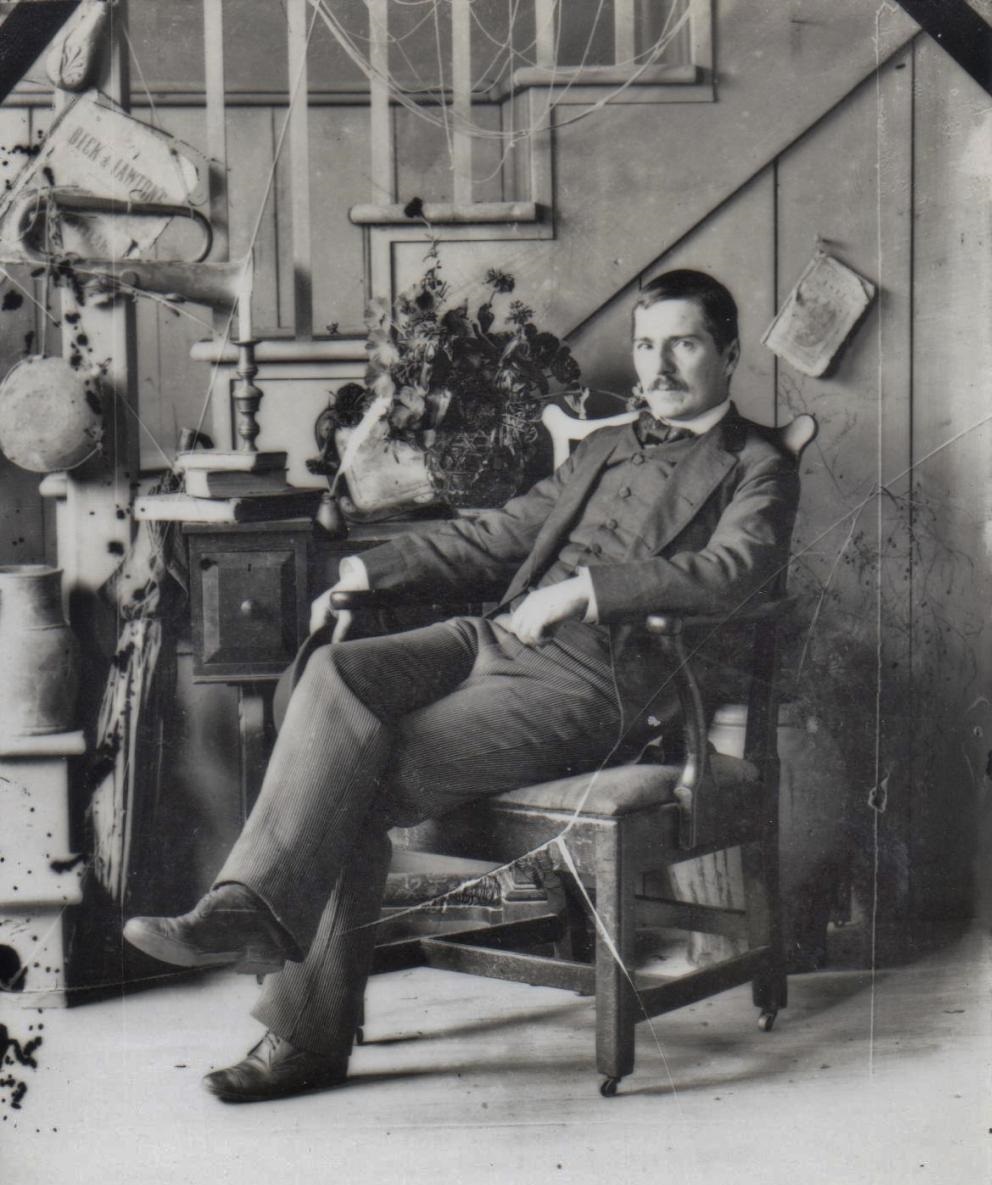
John Frederick Peto was an American trompe-l'œil ("fool the eye") painter who was long forgotten until his paintings were rediscovered along with those of fellow trompe-l'œil artist William Harnett.
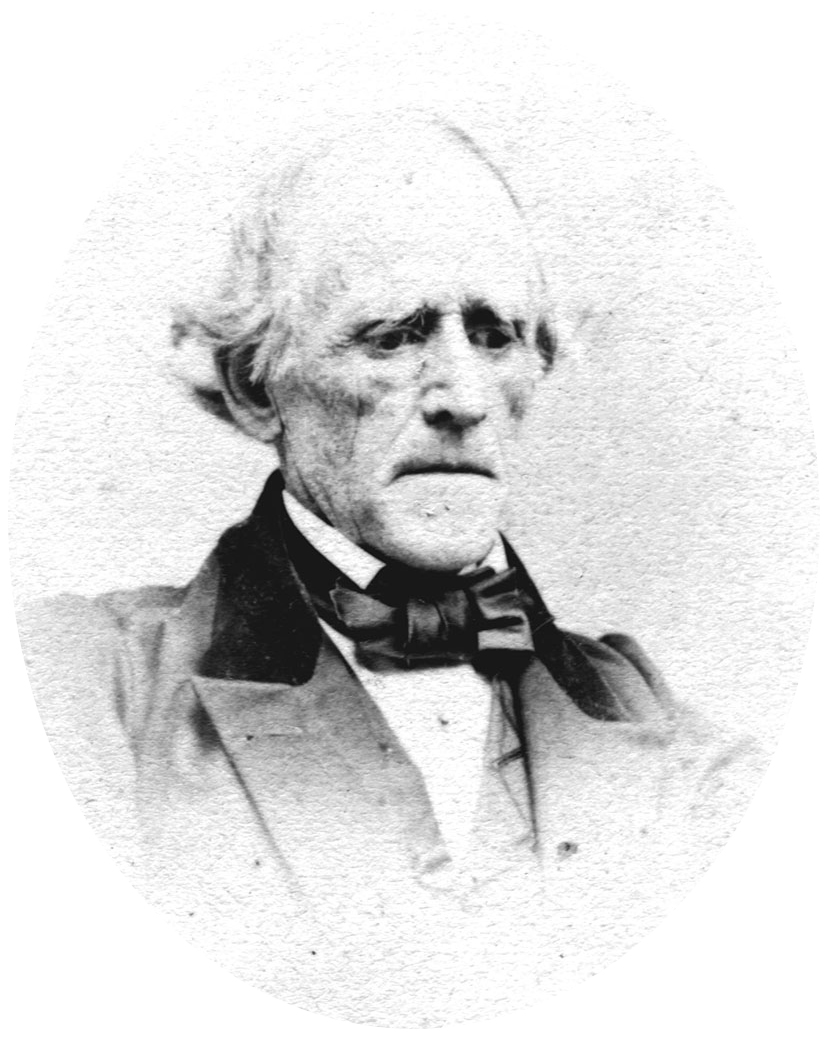
Fitz Henry Lane (born Nathaniel Rogers Lane) was an American painter and printmaker of a style that would later be called Luminism, for its use of pervasive light.
A contemporary of the Hudson River School, he enjoyed a reputation as America's premier painter of marine subjects during his lifetime, but fell into obscurity soon after his death with the rise of French Impressionism. Lane's work would be rediscovered in the 1930s by the art collector Maxim Karolik, after which his art steadily grew in popularity among private collectors and public institutions. His work can now command at auction prices ranging as high as three to five million dollars.
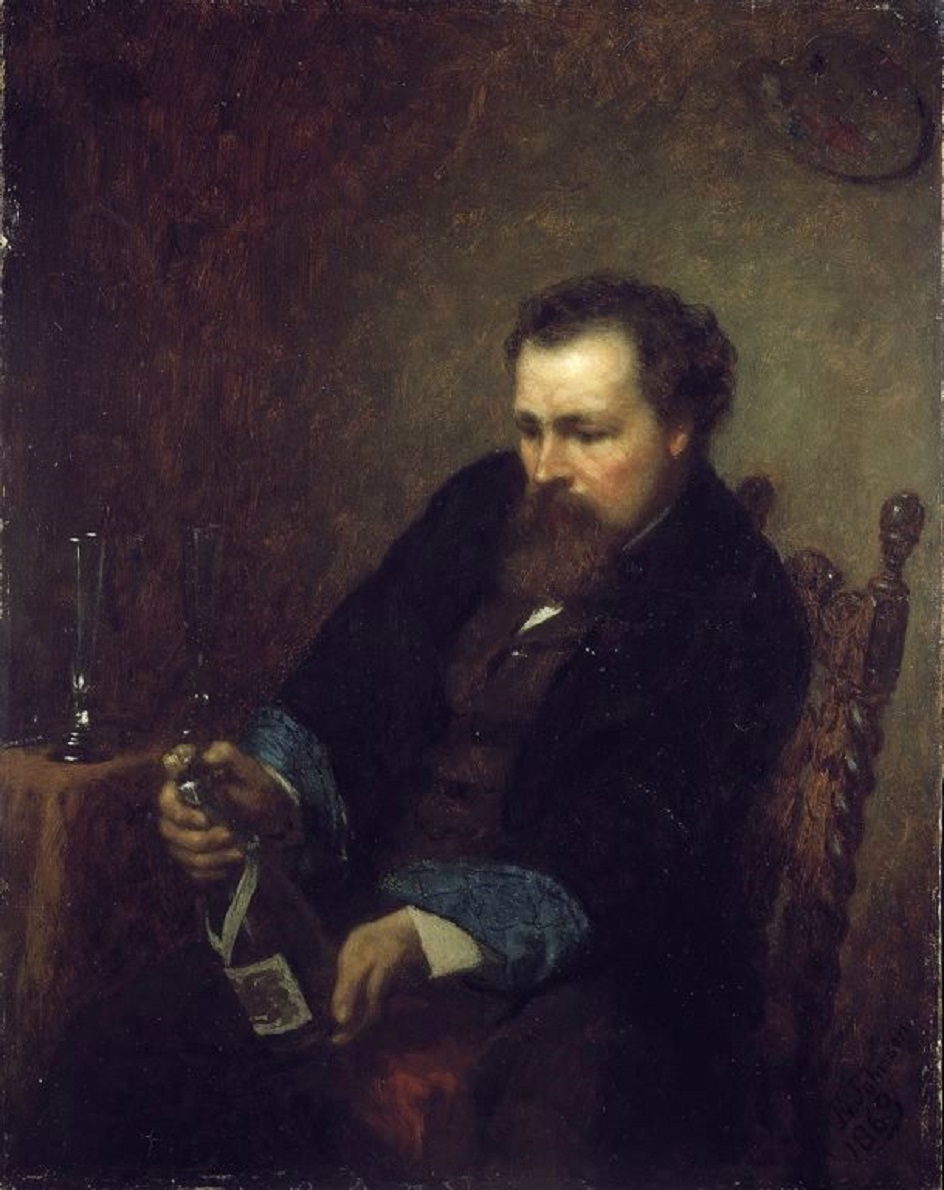
Eastman Johnson was a nineteenth-century American artist. He was known as a master of domestic and portrait genres. Johnson was a proponent of realism in art, his style was greatly influenced by the works of the Dutch and Flemish painters of the 17th century. Contemporaries often called him the "American Rembrandt".
Eastman Johnson in his paintings depicted for posterity many prominent historical figures and everyday life of his contemporaries - ordinary citizens of the United States. Many of his works of the domestic genre were devoted to the lives of black slaves. It was these works that brought the artist widespread fame, and in 1860 he was elected a full member of the National Academy of Design.
Johnson is one of the founders of the Metropolitan Museum of Art in New York, which now houses some of his paintings.
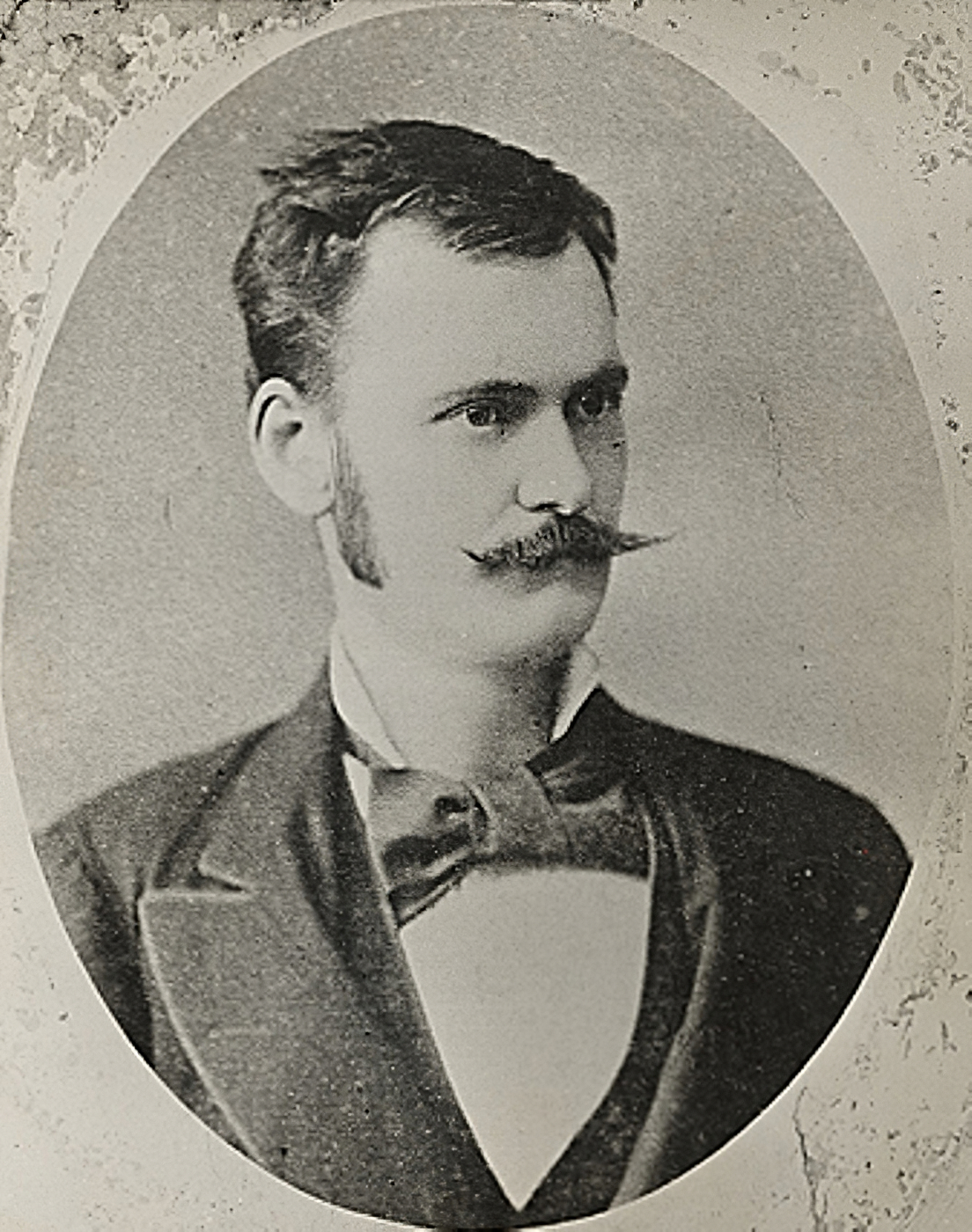
William Michael Harnett was an American painter of the second half of the 19th century. He became known as a master of still life. William Harnett was famous for his pictures of deception with extremely accurate depictions of everyday objects, which the viewer often could not distinguish from real things.
William Harnett, unlike most of his colleagues, never sought fame and popularity, so he forever remained faithful to the still life genre he had chosen as a young artist. His biography is a typical example of a successful career of a self-taught artist without academic education.
Harnett's best masterpieces are now preserved in museums in the United States.
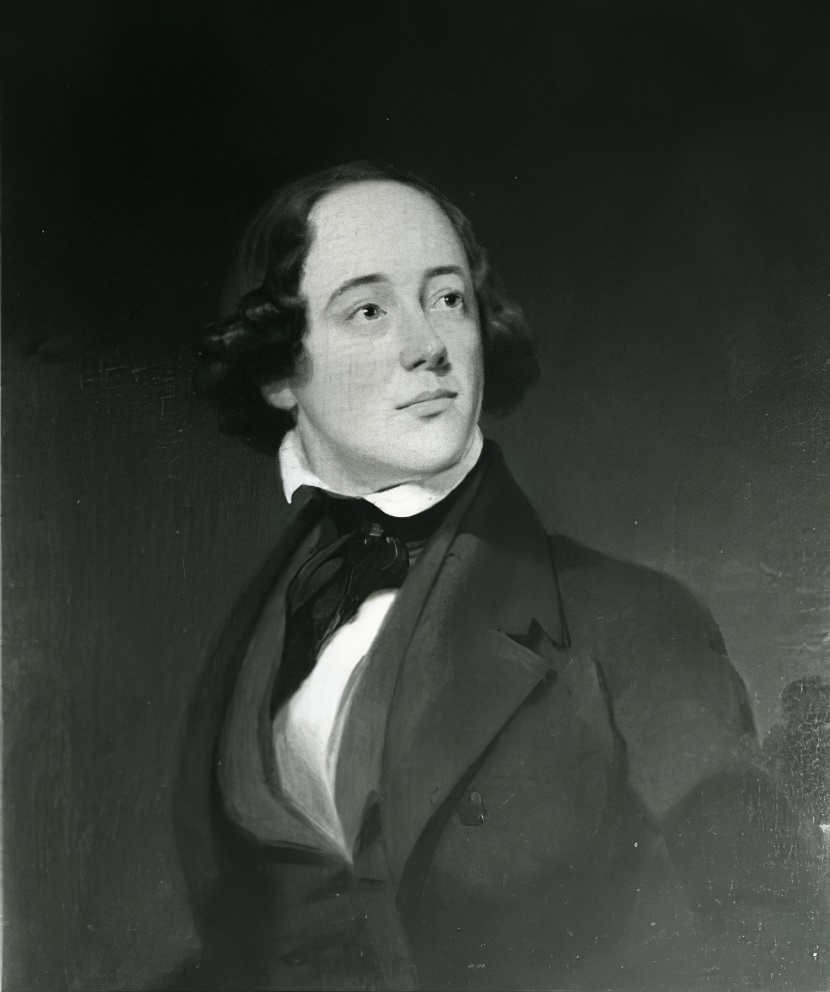
Martin Johnson Heade was an American painter known for his salt marsh landscapes, seascapes, and depictions of tropical birds (such as hummingbirds), as well as lotus blossoms and other still lifes. His painting style and subject matter, while derived from the romanticism of the time, are regarded by art historians as a significant departure from those of his peers.
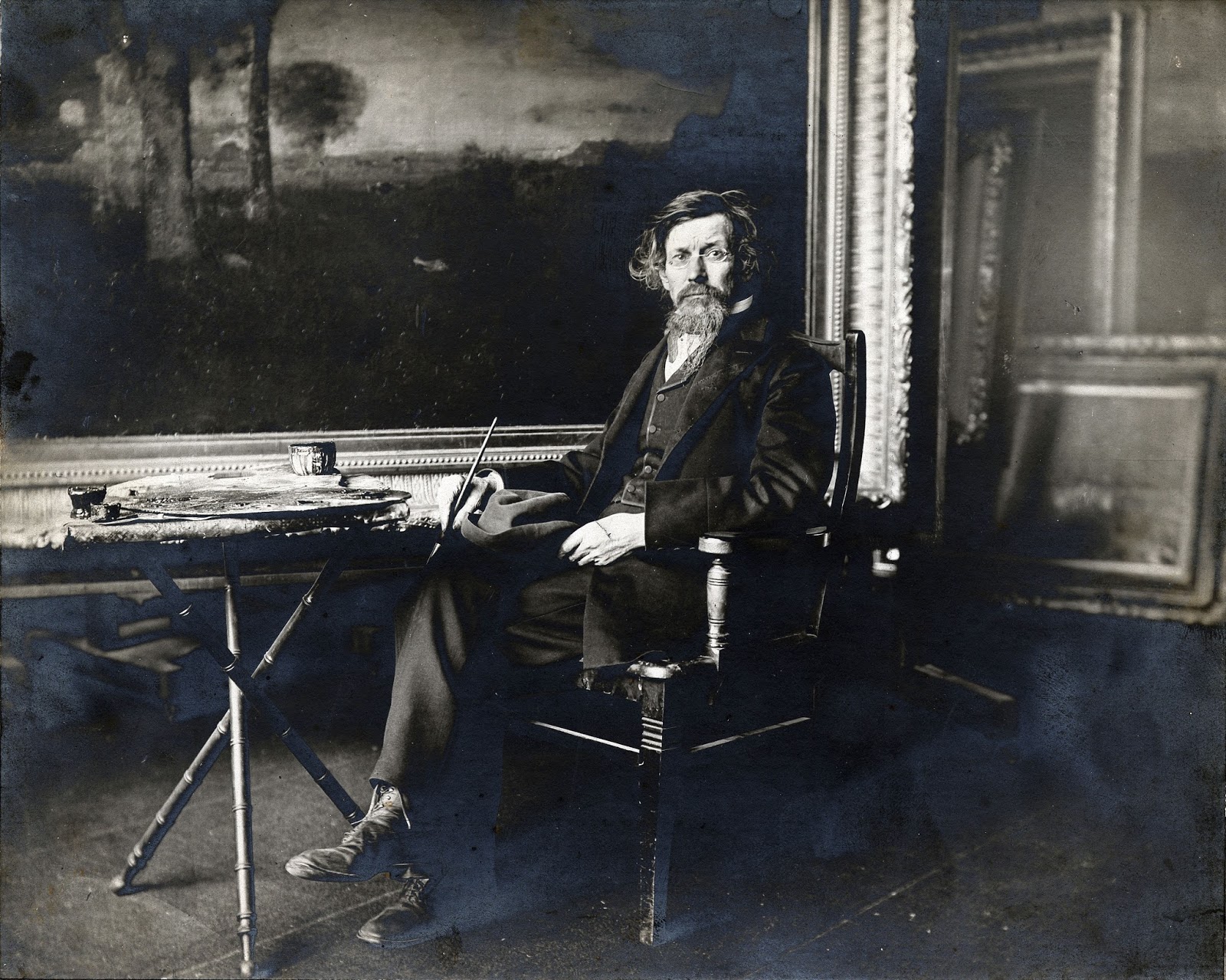
George Inness was a prominent American landscape painter.
Now recognized as one of the most influential American artists of the nineteenth century, Inness was influenced by the Hudson River School at the start of his career. He also studied the Old Masters, and artists of the Barbizon school during later trips to Europe. There he was introduced to the theology of Emanuel Swedenborg, which was significant for him; he expressed that spiritualism in the works of his maturity (1879-1894).
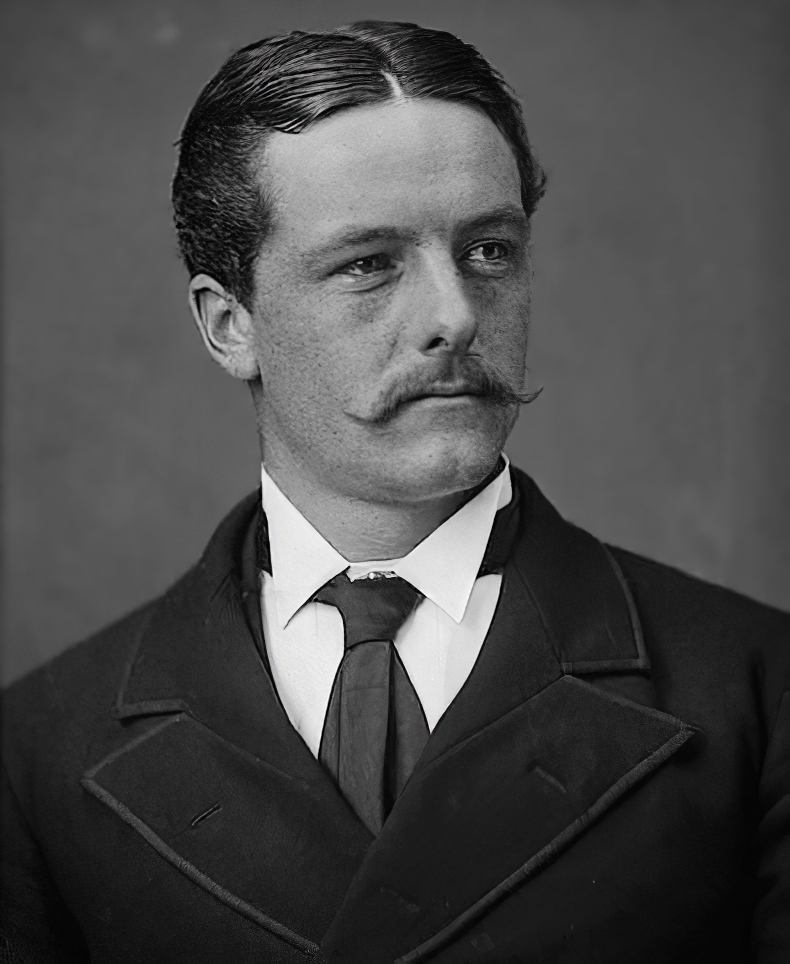
Francis Augustus Silva was an American Luminist painter of the Hudson River School. His specialty was marine scenes, particularly of the Atlantic coast, a genre in which he masterfully captured the subtle gradations of light in the coastal atmosphere. He focused on romantic scenes, avoiding depictions of seaside recreation, even when painting scenes at Coney Island, which was then already a popular recreational area.
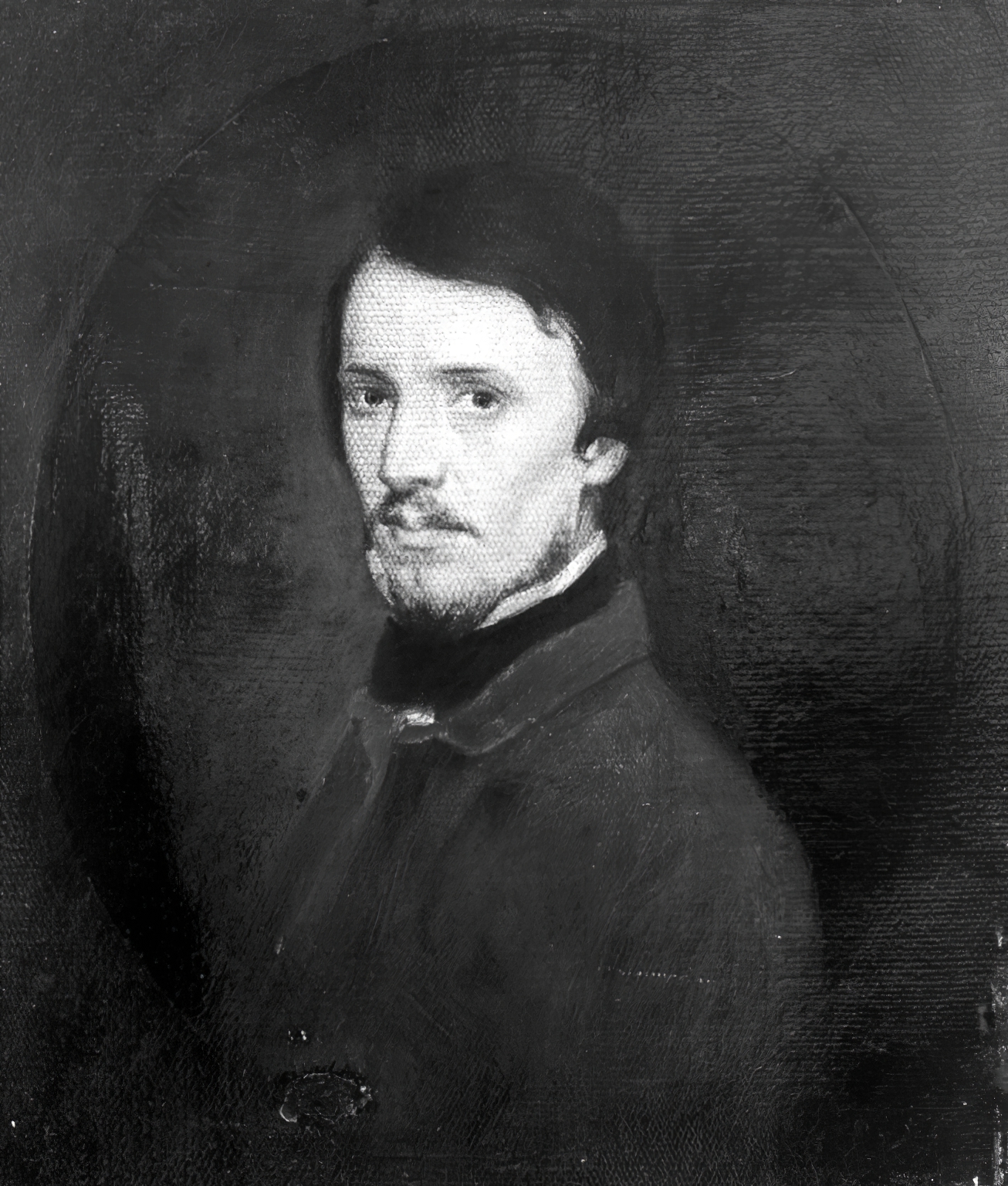
Sanford Robinson Gifford was an American landscape painter and a leading member of the second generation of Hudson River School artists. A highly-regarded practitioner of Luminism, his work was noted for its emphasis on light and soft atmospheric effects.
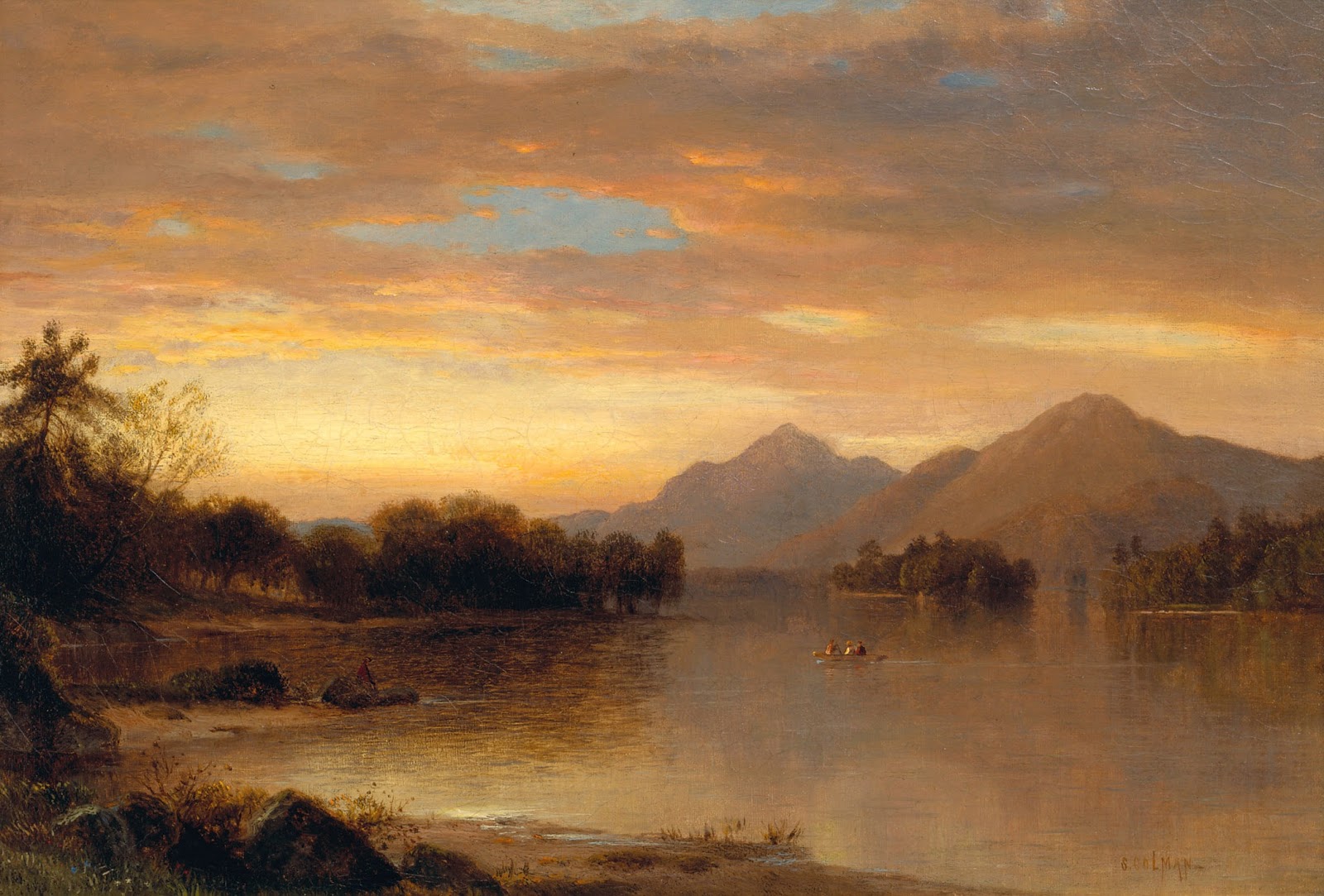
Samuel Colman was an American artist, celebrated for his contributions to the Hudson River School, an art movement known for its romantic portrayal of the American landscape. Born in Portland, Maine, in 1832, Samuel Colman moved to New York City during his youth, where he immersed himself in the art world, influenced by his father's profession as a bookseller and publisher of fine arts. He was a pupil of Asher Durand, a leading figure in the Hudson River School, and this mentorship significantly shaped his artistic direction.
Samuel Colman's work is recognized for its diversity, capturing various landscapes from the bustling harbors of Seville to the serene Green River Valley in Wyoming. His travels across Europe and the American West provided a rich tapestry of subjects for his paintings, reflecting his interest in both oil and watercolor mediums. Notably, his painting "Spanish Peaks, Southern Colorado, Late Afternoon" is an example of his mastery in depicting the American West, offering vital visual records of the nation's landscapes during the 19th century.
A notable figure in the art community, Samuel Colman was instrumental in the establishment of the American Watercolor Society, serving as its first president. His contributions to art were not limited to painting; he was also involved in interior design and wrote theoretical treatises on art. Colman's works are held in prestigious institutions, including the Metropolitan Museum of Art and the Smithsonian American Art Museum, where they continue to inspire and captivate audiences with their portrayal of natural beauty and harmonious unity.
For art collectors and experts, understanding Colman's influence and the breadth of his work offers valuable insights into the evolution of American landscape painting. If you're intrigued by Samuel Colman's artistic legacy and wish to stay informed about sales and auction events related to his work, consider signing up for updates to enrich your collection and knowledge of this distinguished artist.

William Michael Harnett was an American painter of the second half of the 19th century. He became known as a master of still life. William Harnett was famous for his pictures of deception with extremely accurate depictions of everyday objects, which the viewer often could not distinguish from real things.
William Harnett, unlike most of his colleagues, never sought fame and popularity, so he forever remained faithful to the still life genre he had chosen as a young artist. His biography is a typical example of a successful career of a self-taught artist without academic education.
Harnett's best masterpieces are now preserved in museums in the United States.
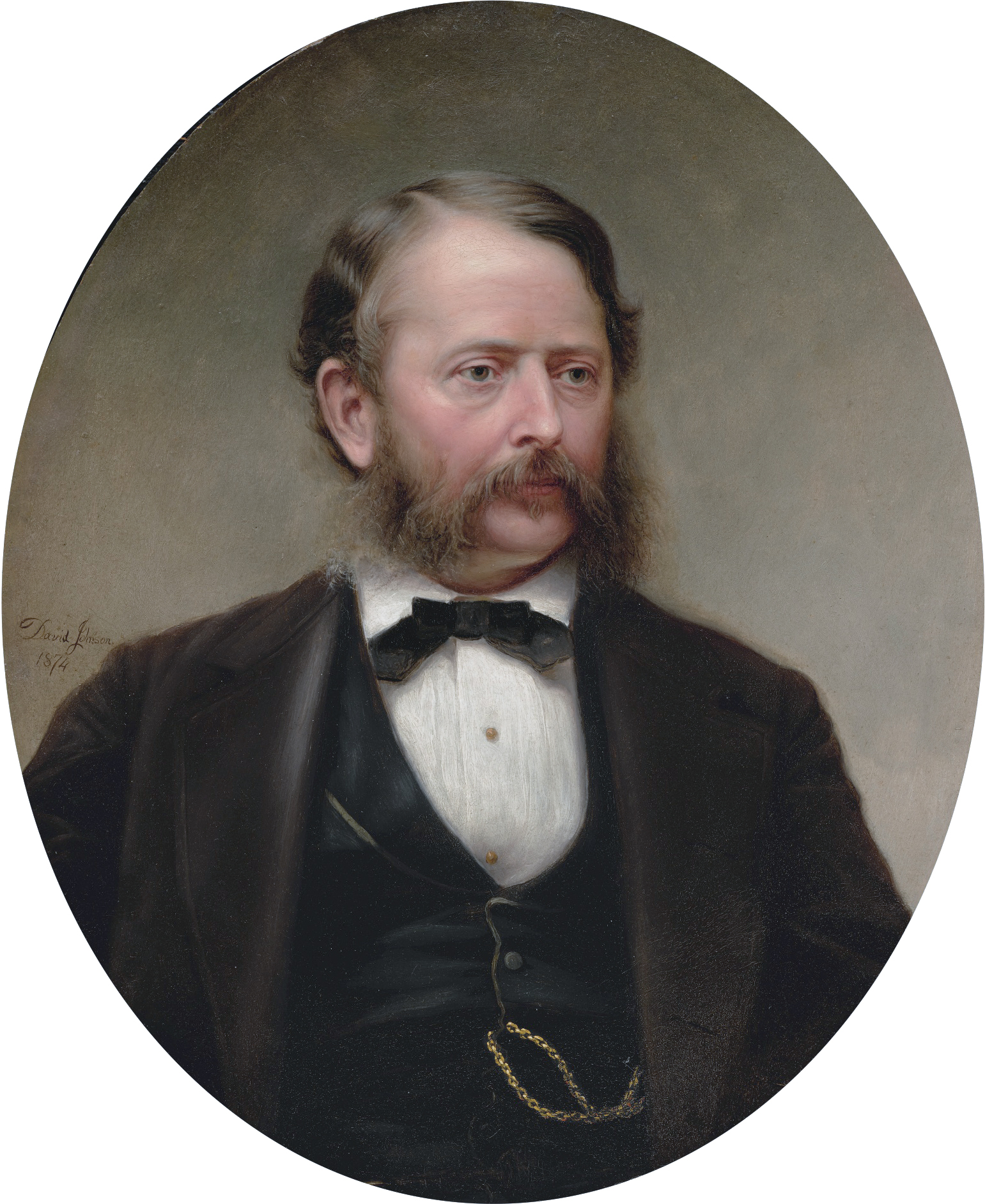
John Frederick Kensett was an American landscape painter and engraver born in Cheshire, Connecticut. He was a member of the second generation of the Hudson River School of artists. Kensett's signature works are landscape paintings of New England and New York State, whose clear light and serene surfaces celebrate transcendental qualities of nature, and are associated with Luminism. Kensett's early work owed much to the influence of Thomas Cole, but was from the outset distinguished by a preference for cooler colors and an interest in less dramatic topography, favoring restraint in both palette and composition. The work of Kensett's maturity features tranquil scenery depicted with a spare geometry, culminating in series of paintings in which coastal promontories are balanced against glass-smooth water. He was a founder of the Metropolitan Museum of Art.
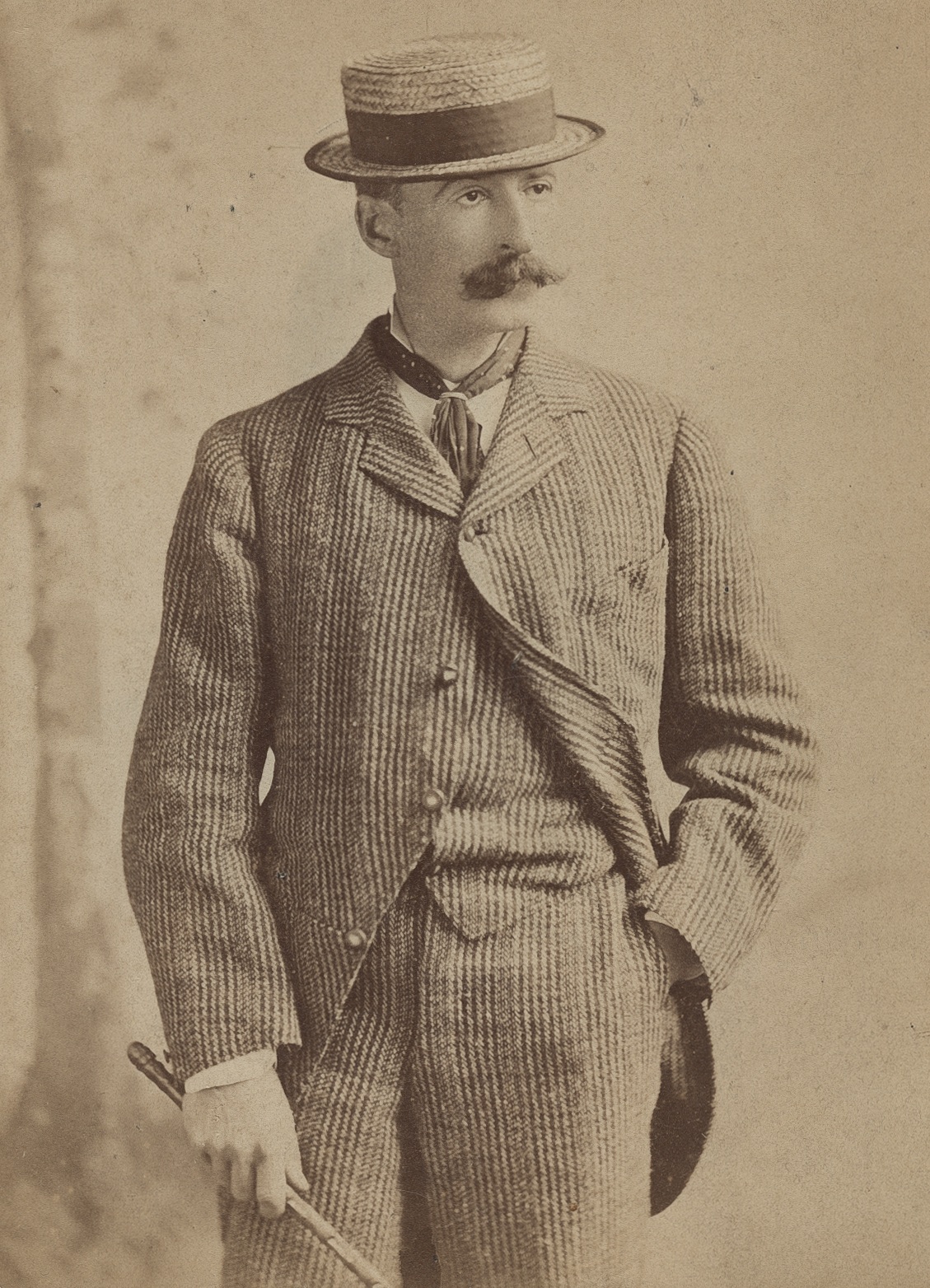
Winslow Homer was an American landscape painter and printmaker, renowned for his mastery of marine subjects and considered a preeminent figure in 19th-century American art. Born in Boston, Massachusetts in 1836, Homer was largely self-taught, starting his career as a commercial illustrator before venturing into oil painting and watercolors.
Homer's art evolved significantly over his lifetime. During the American Civil War, he worked as a correspondent, creating sketches that conveyed both the immediacy and the human cost of the war. This experience deeply influenced his later work, particularly his powerful oil paintings depicting war and its aftermath. After the war, Homer's focus shifted towards scenes of nature and rural America, reflecting a national nostalgia for simpler times. His works from this period, such as "The Cotton Pickers" and "Snap the Whip," showcase his ability to capture everyday life with poignant realism and emotional depth.
Later in his career, Homer became renowned for his watercolors and seascapes, such as "Breezing Up (A Fair Wind)" and "The Gulf Stream," which are celebrated for their dynamic composition and vivid portrayal of human interaction with nature. His late seascapes, which often depicted the rugged coastlines of Maine, are particularly noted for their dramatic intensity and hint at modernist abstraction, capturing the formidable power and timeless beauty of the sea.
Homer's works are held in high regard and continue to be featured in major museums and galleries, providing inspiration and insight into the American experience of the 19th century.
For those interested in the works of Winslow Homer and the impact of his art, you can sign up for updates related to new product sales and auction events featuring his work. This will keep you informed on opportunities to engage more deeply with Homer's enduring legacy.
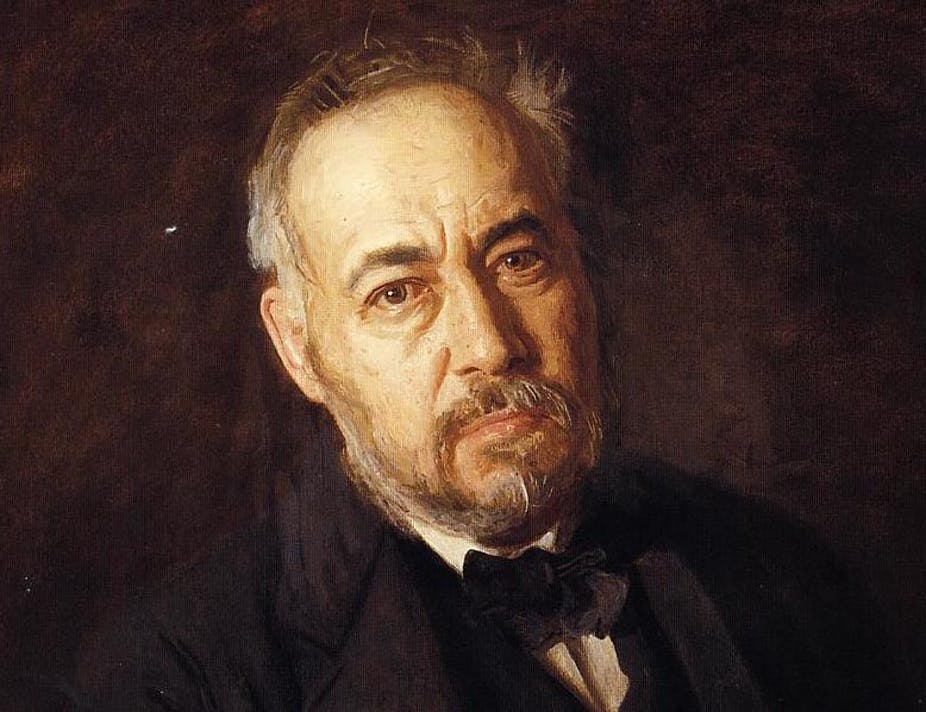
Thomas Cowperthwait Eakins was a pivotal figure in American realism, celebrated for his profound and uncompromising portrayal of the human figure. Born on July 25, 1844, in Philadelphia, Pennsylvania, Eakins dedicated his life to depicting authentic human experiences and emotions through painting, sculpture, and photography.
Eakins' education in art began at the Pennsylvania Academy of the Fine Arts and extended to studying abroad in Europe, where he was influenced by French realists and the anatomical precision in their work. His approach combined rigorous study of the human form with a realistic portrayal of American life, making significant contributions to both art and educational practices in the United States.
His notable works include "The Gross Clinic" and "Max Schmitt in a Single Scull," which showcase his mastery in combining technical skill with emotional depth. These pieces not only depict scenes from everyday life but also incorporate a level of detail that reveals Eakins' deep respect for the individuality and inner life of his subjects. Despite facing criticism during his lifetime, particularly for his unflinching realism and subjects considered controversial at the time, Eakins was posthumously recognized as one of America's foremost painters.
For those interested in learning more about Thomas Cowperthwait Eakins' life, works, and his impact on American art, visiting collections that feature his work, such as the Metropolitan Museum of Art and the Pennsylvania Academy of the Fine Arts, can offer deeper insights.
To stay updated on exhibitions, new findings, and auction events related to the remarkable works of Thomas Cowperthwait Eakins, consider signing up for our newsletter. Gain exclusive insights and early notifications tailored for collectors and art enthusiasts. This is an excellent opportunity to deepen your appreciation and knowledge of one of America's greatest realist artists. Subscribe today to ensure you don't miss out on these valuable updates!
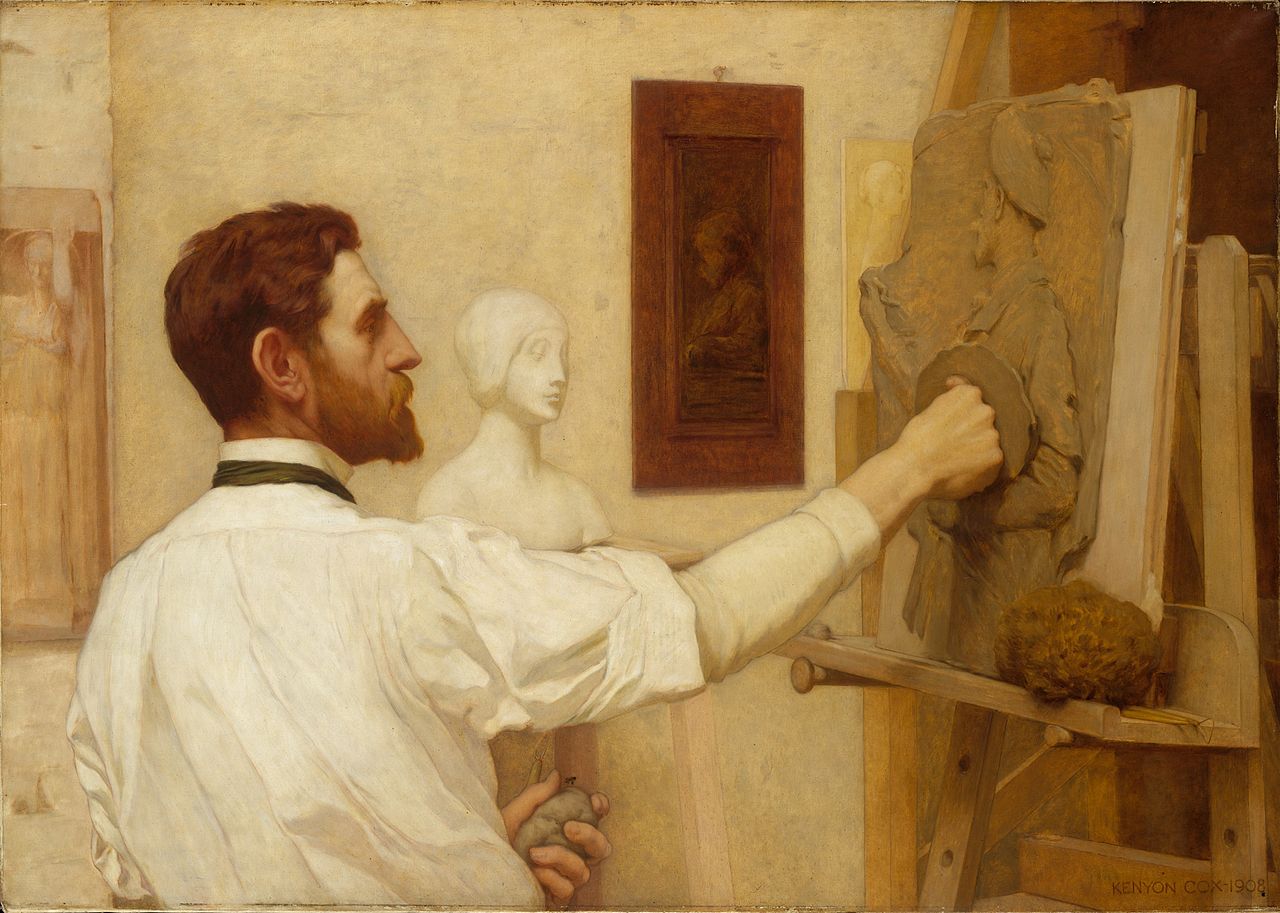
Augustus Saint-Gaudens was an American sculptor of the Beaux-Arts generation who embodied the ideals of the American Renaissance. From a French-Irish family, Saint-Gaudens was raised in New York City, he traveled to Europe for further training and artistic study. After he returned to New York, he achieved major critical success for his monuments commemorating heroes of the American Civil War, many of which still stand. Saint-Gaudens created works such as the Robert Gould Shaw Memorial on Boston Common, Abraham Lincoln: The Man, and grand equestrian monuments to Civil War generals: General John Logan Memorial in Chicago's Grant Park and William Tecumseh Sherman at the corner of New York's Central Park. In addition, he created the popular historicist representation of The Puritan.
Saint-Gaudens also created Classical works such as the Diana, and employed his design skills in numismatics. He designed the $20 Saint Gaudens Double Eagle gold piece (1905–1907) for the US Mint, considered one of the most beautiful American coins ever issued, as well as the $10 "Indian Head" gold eagle; both of these were minted from 1907 until 1933. In his later years he founded the "Cornish Colony", an artist's colony in New Hampshire that included notable painters, sculptors, writers, and architects.
